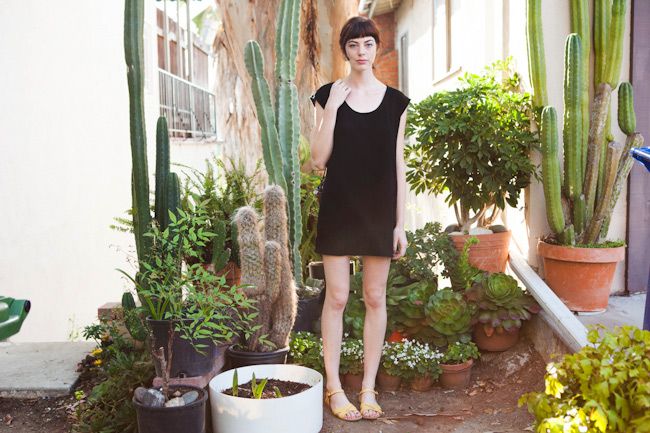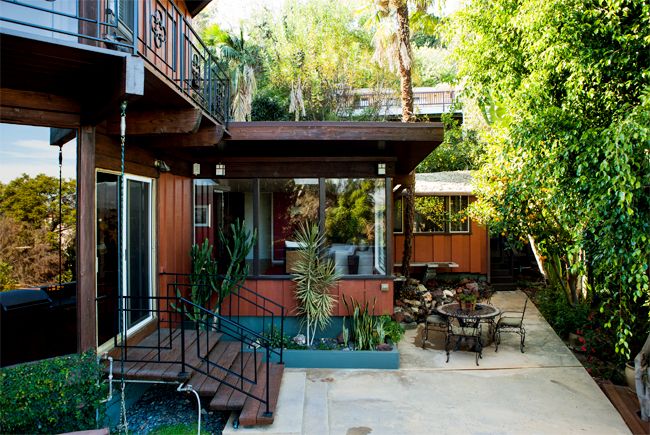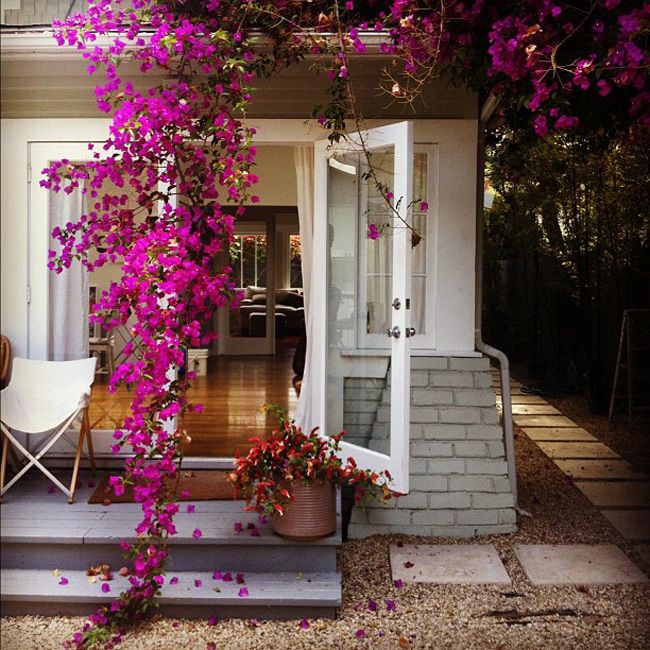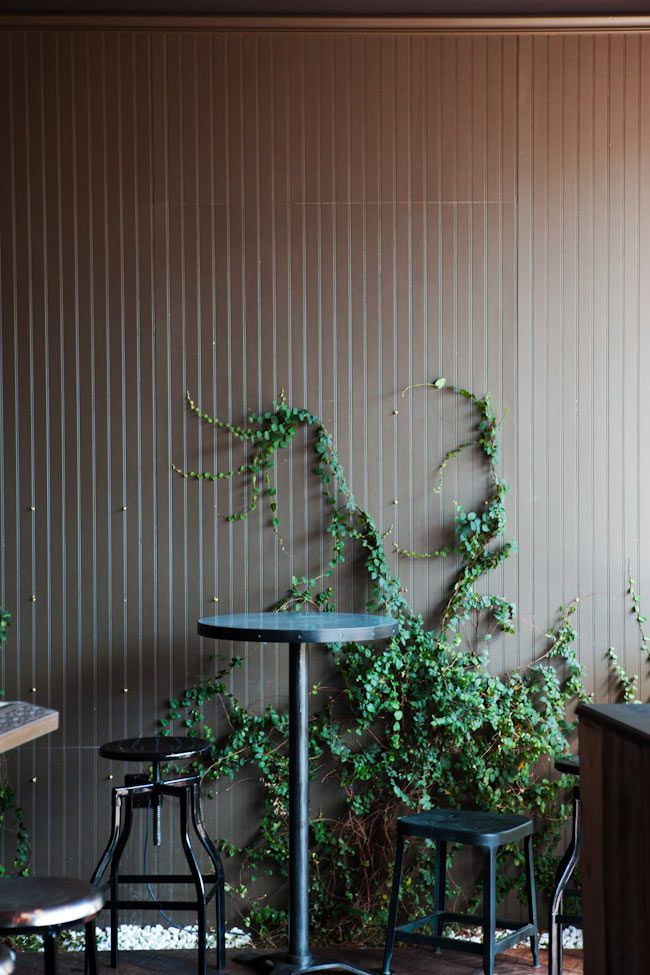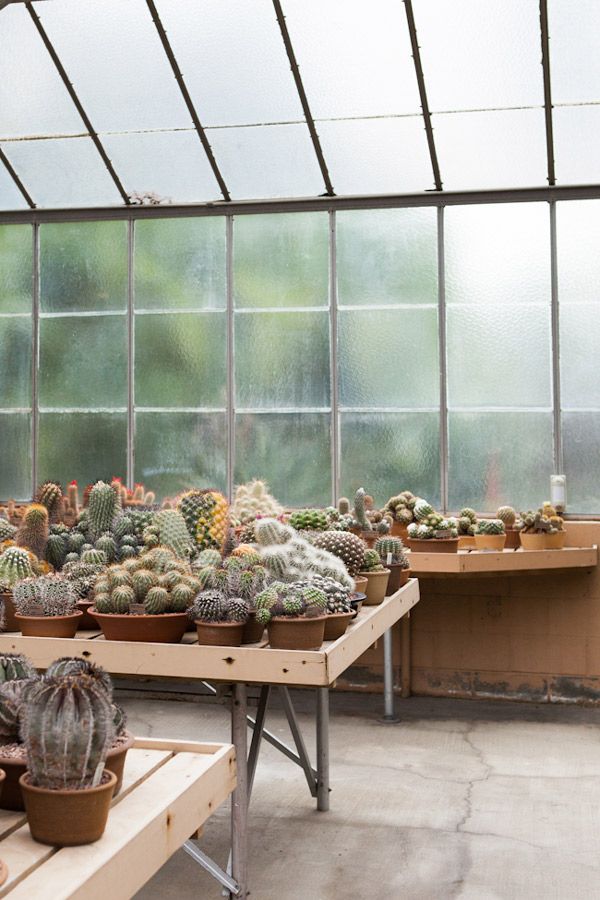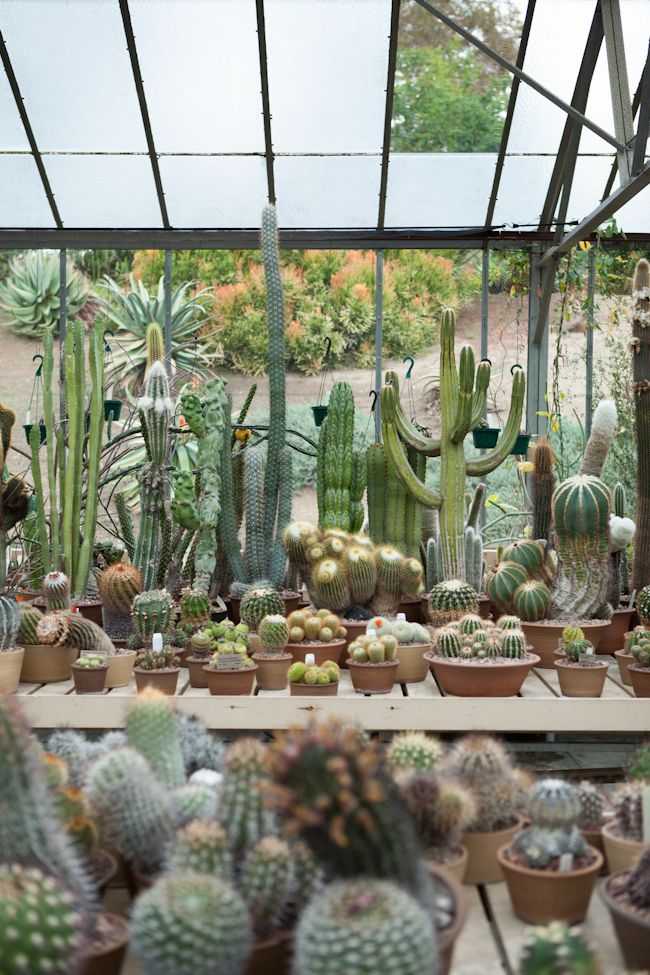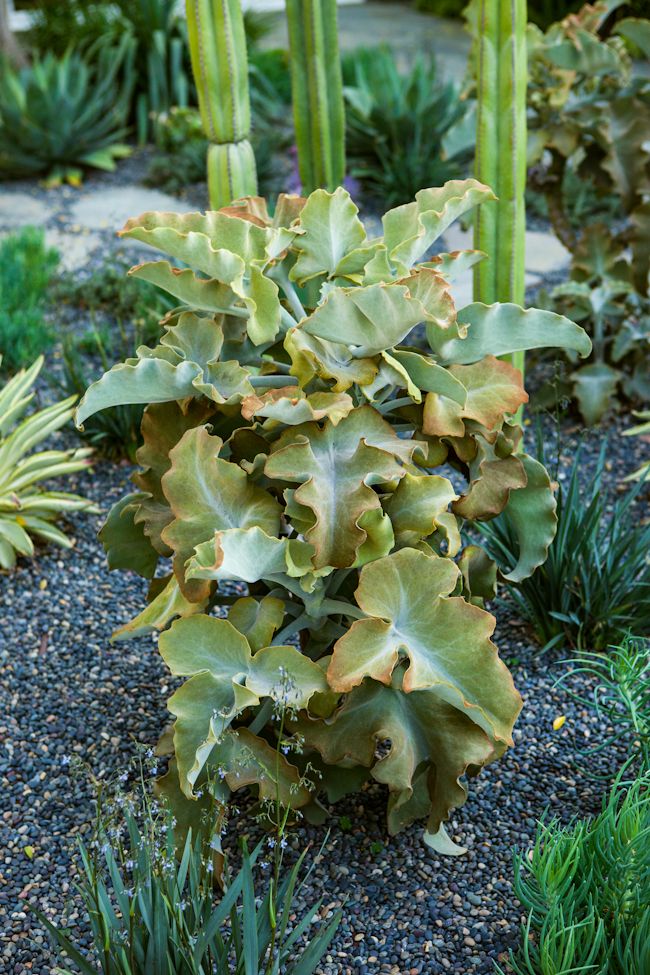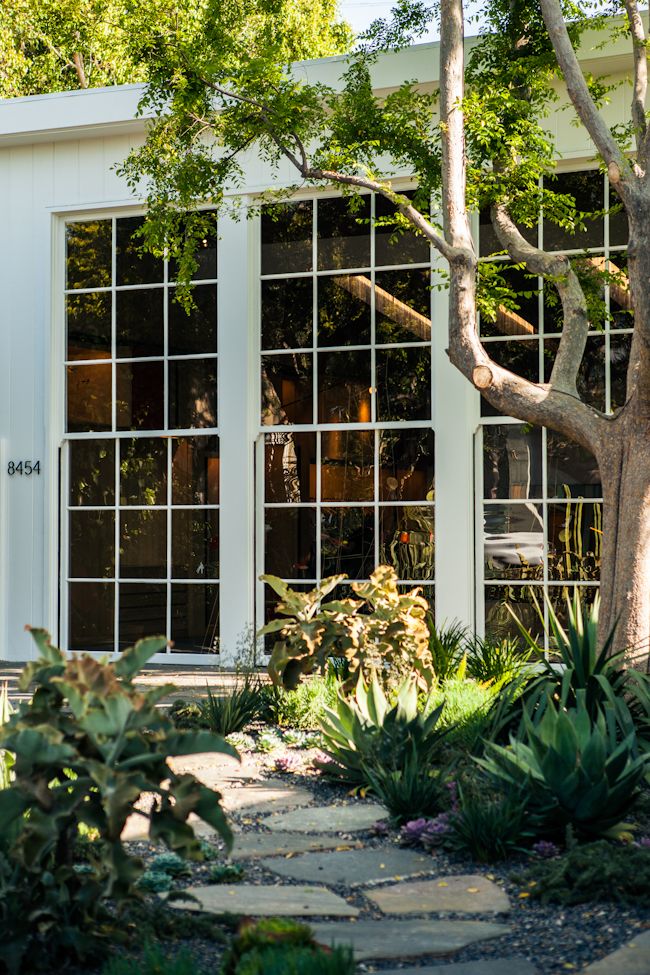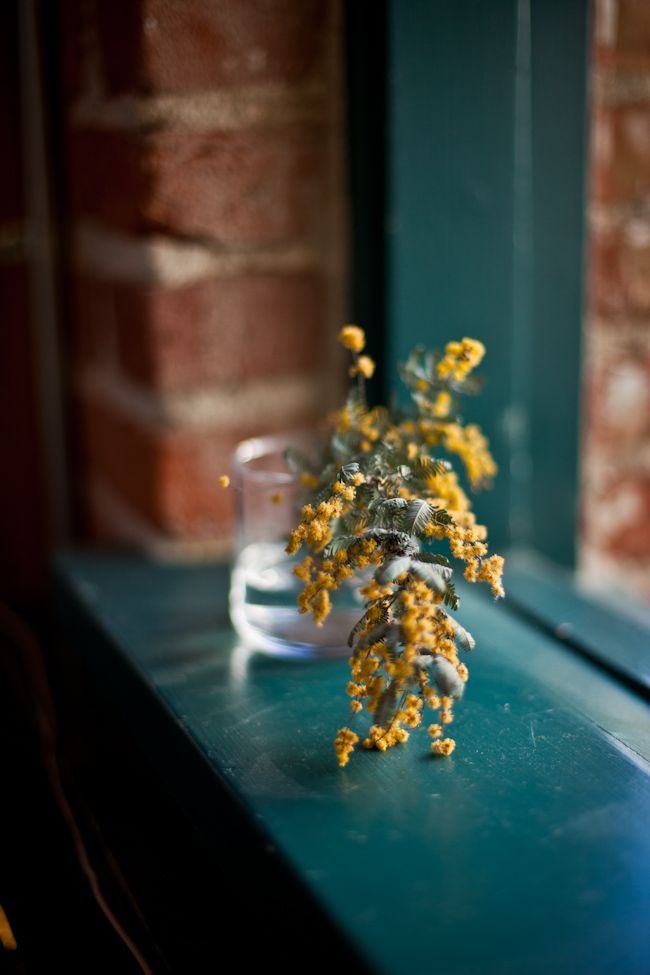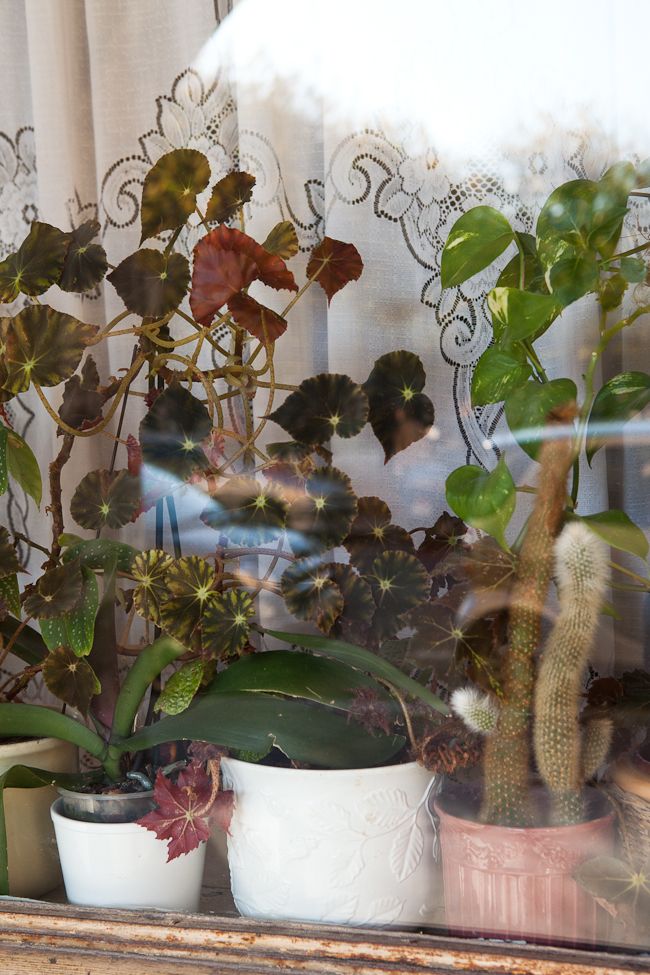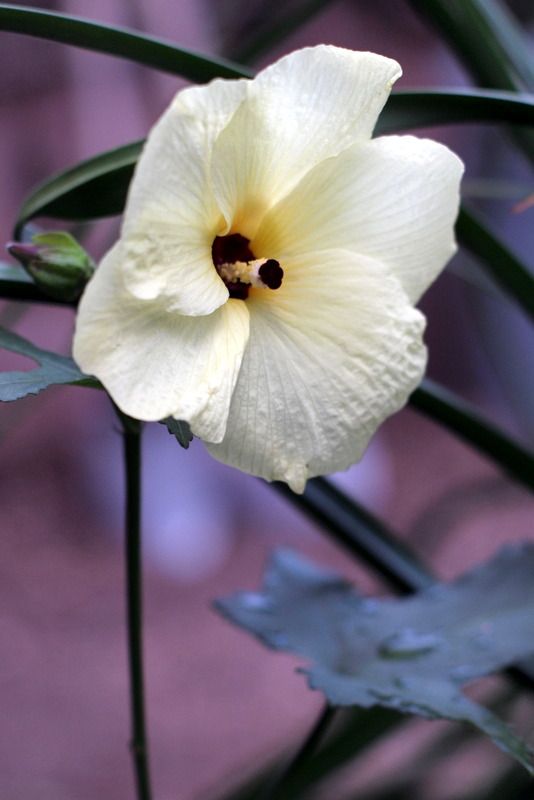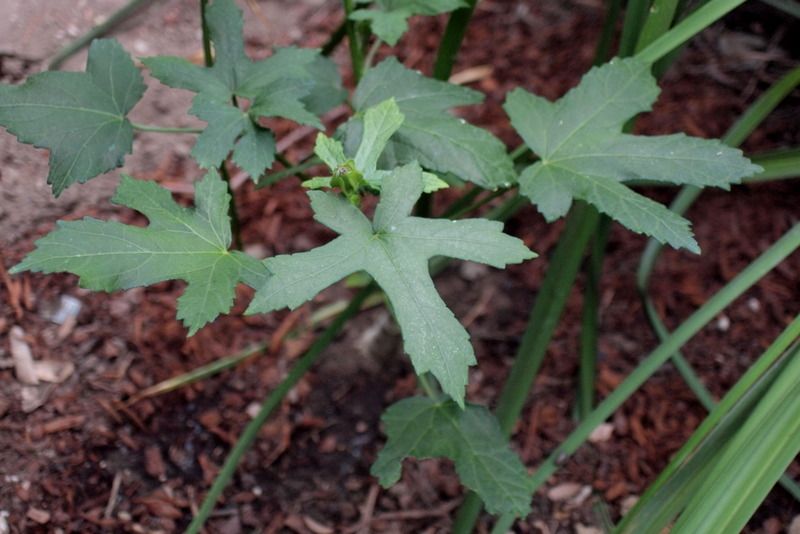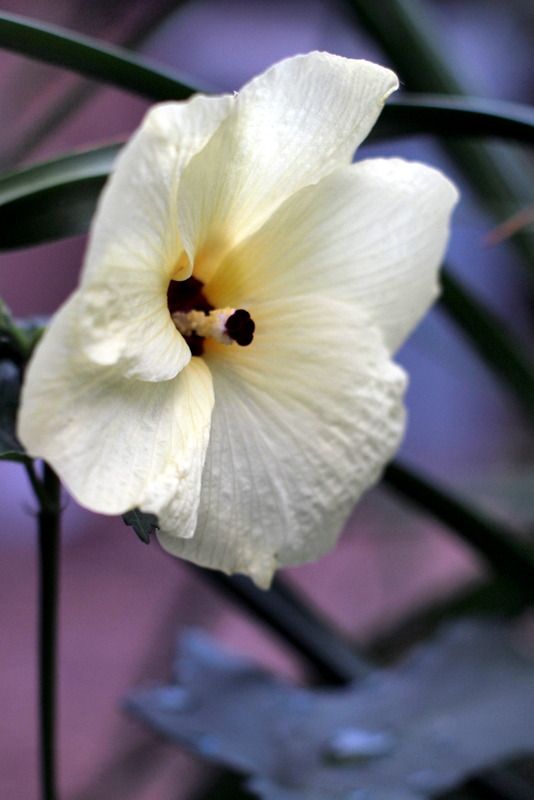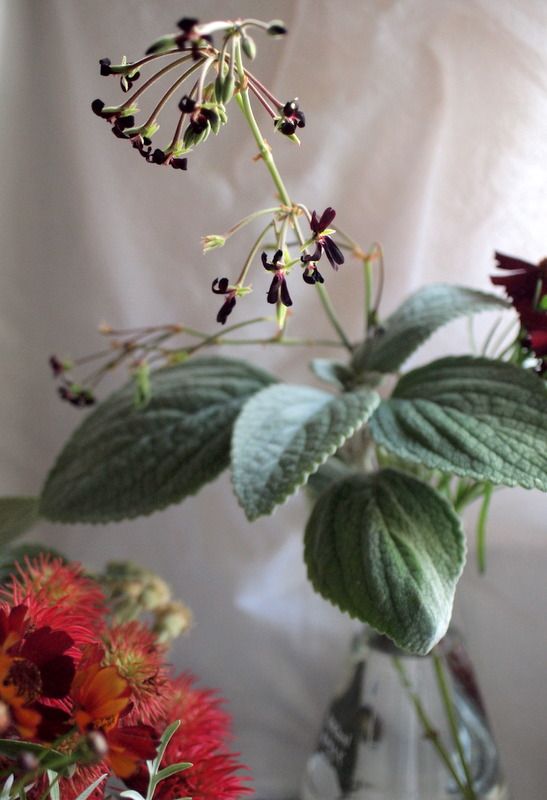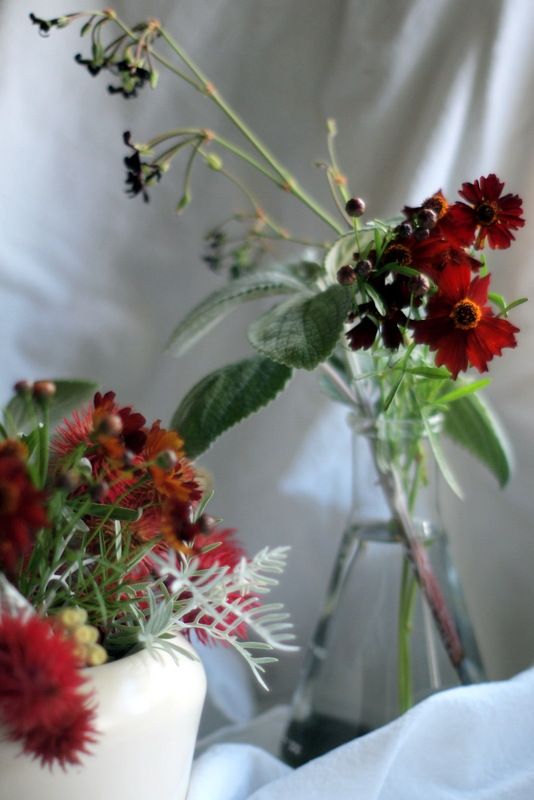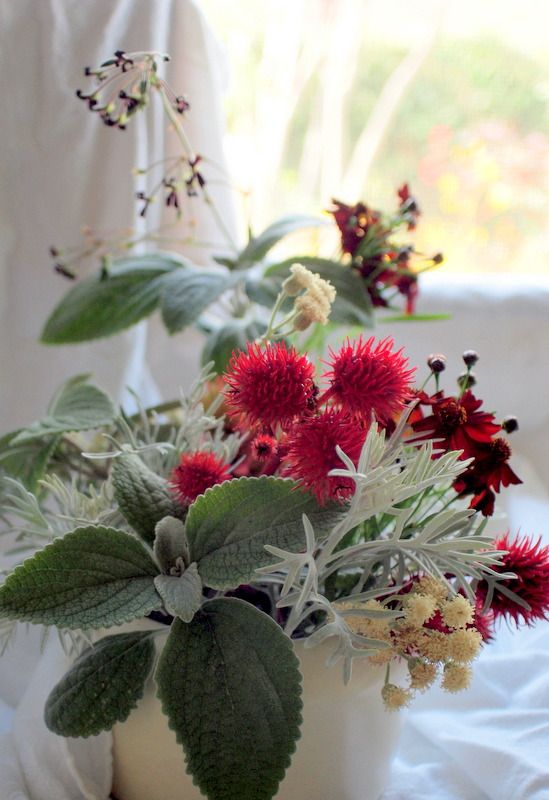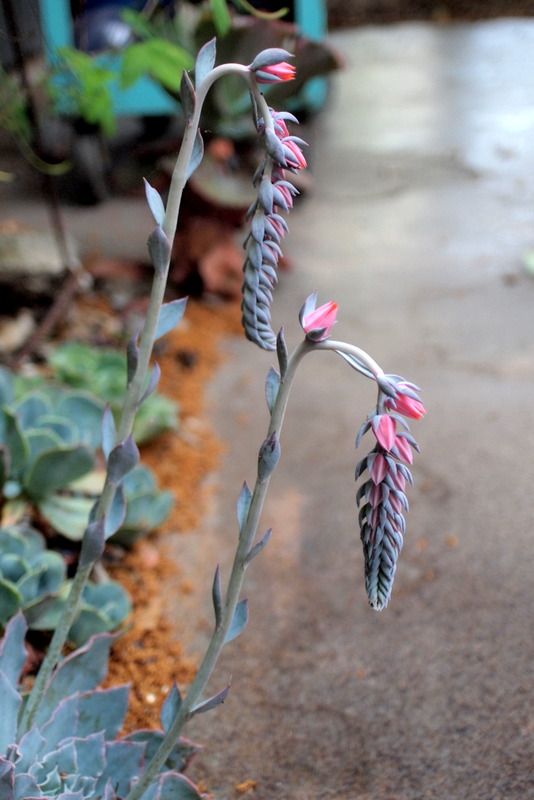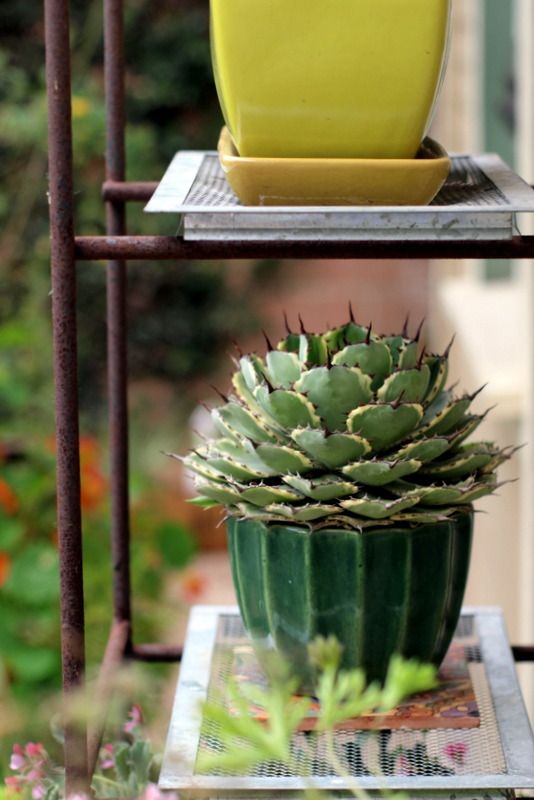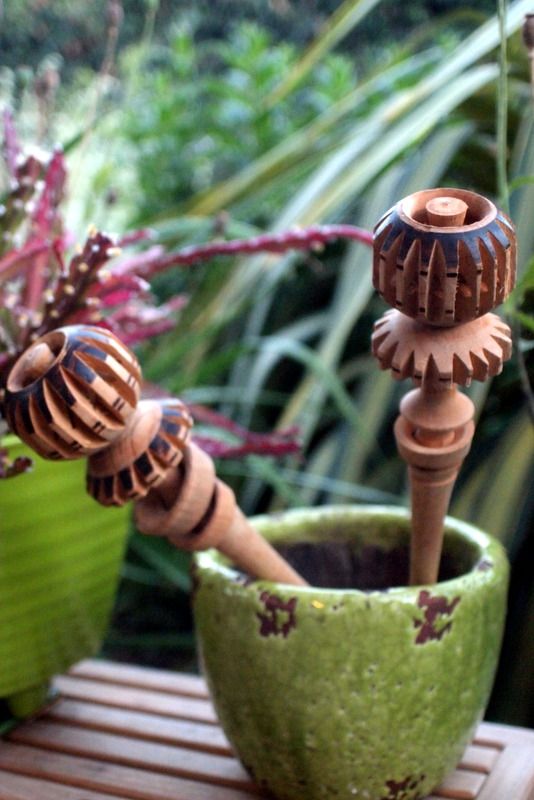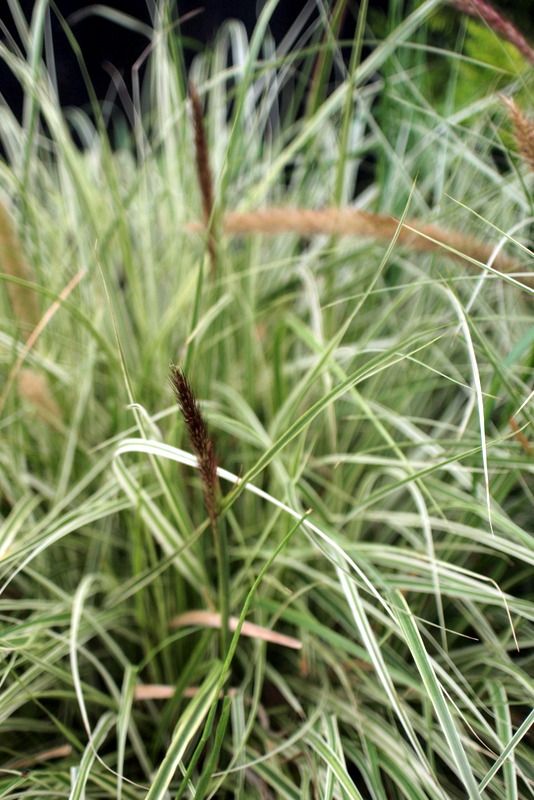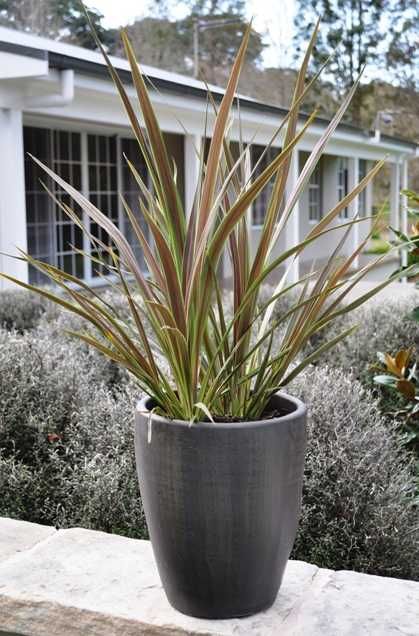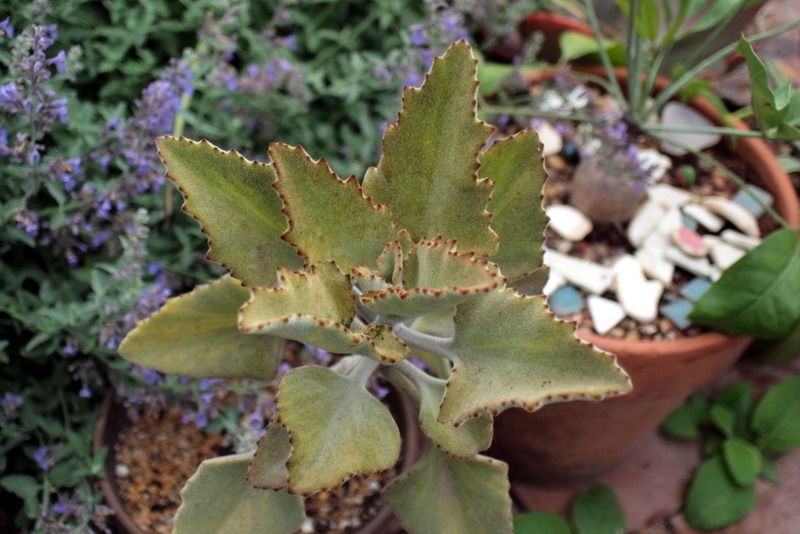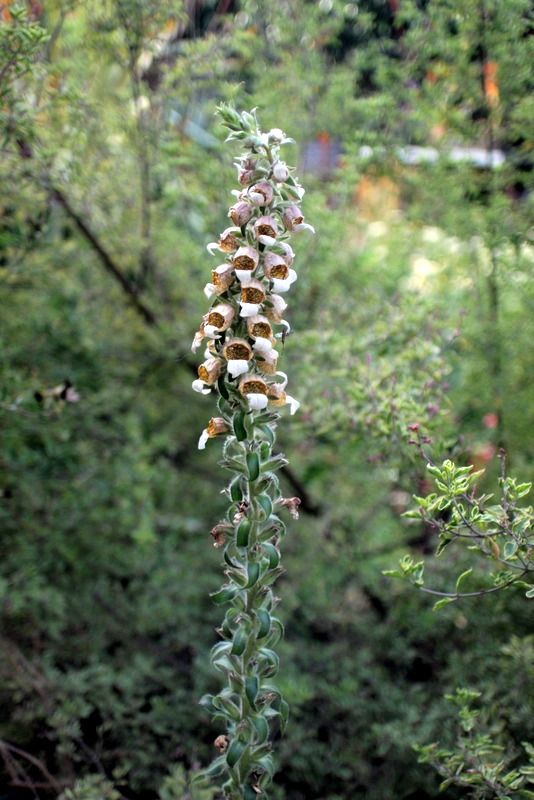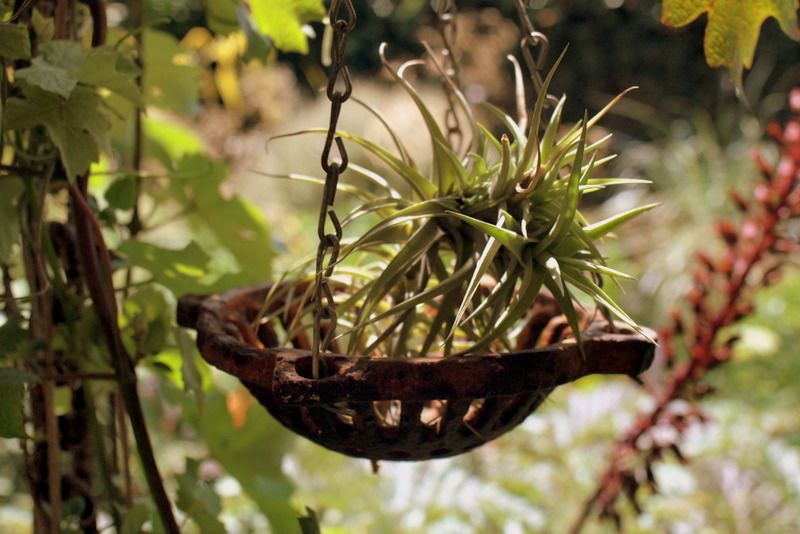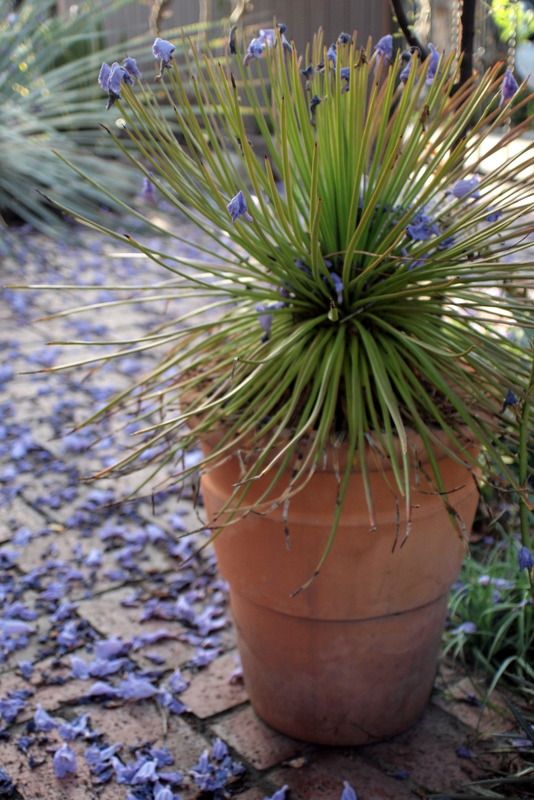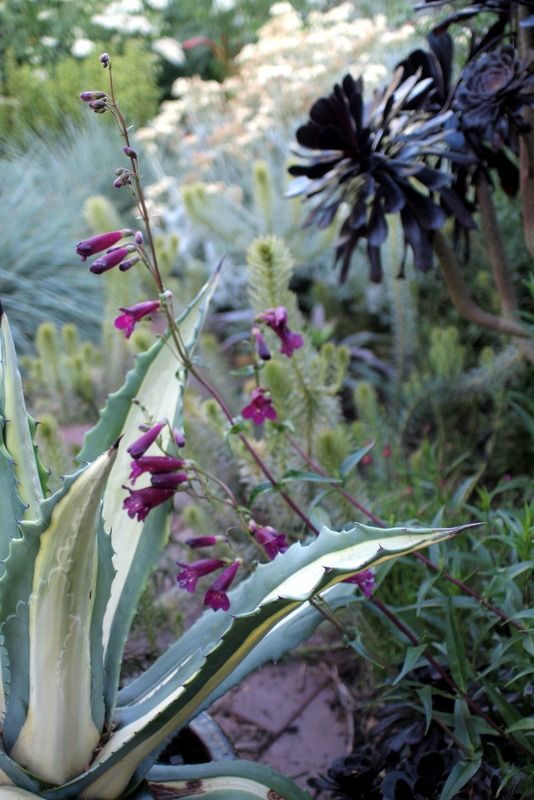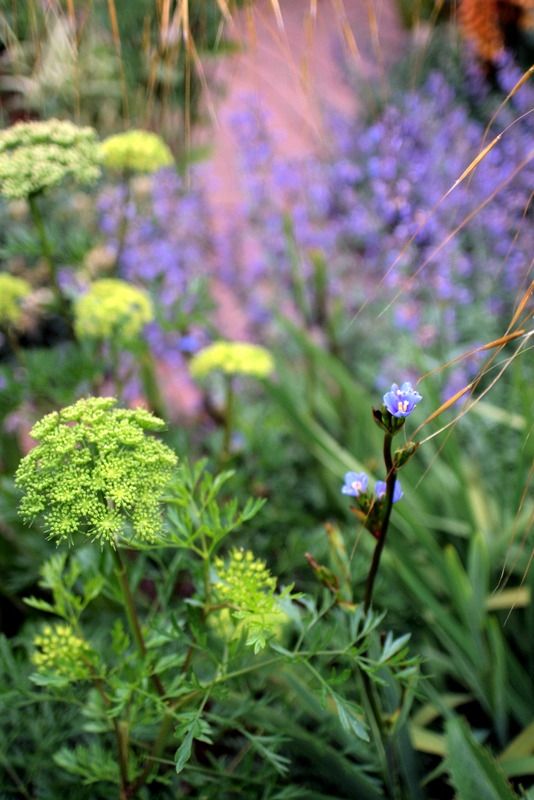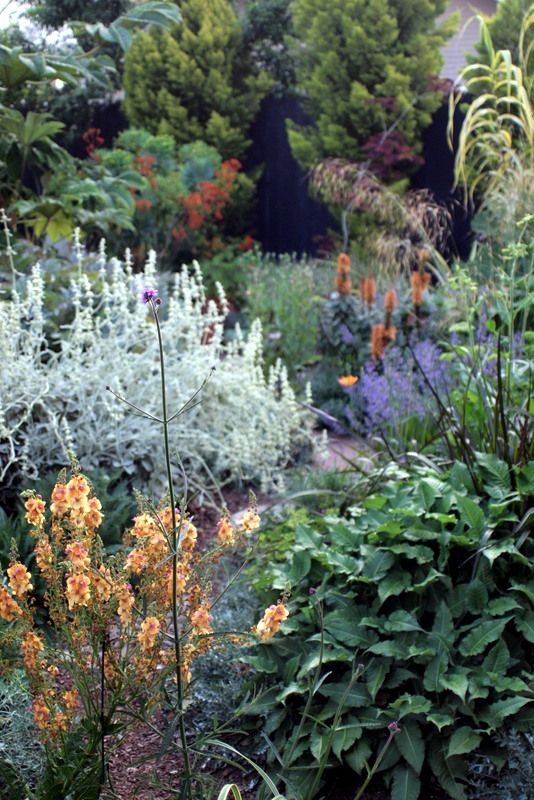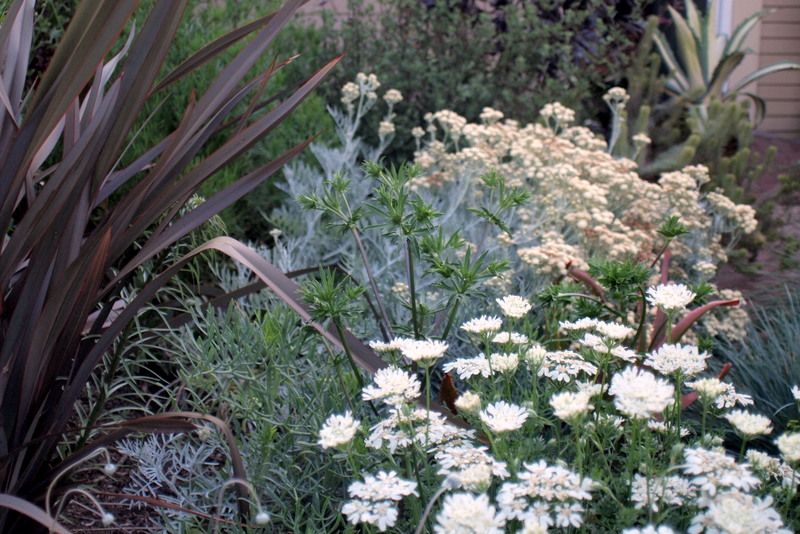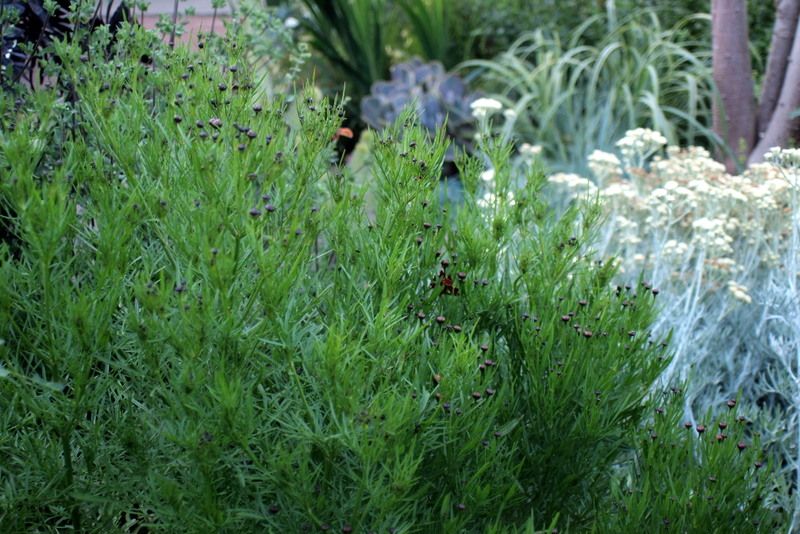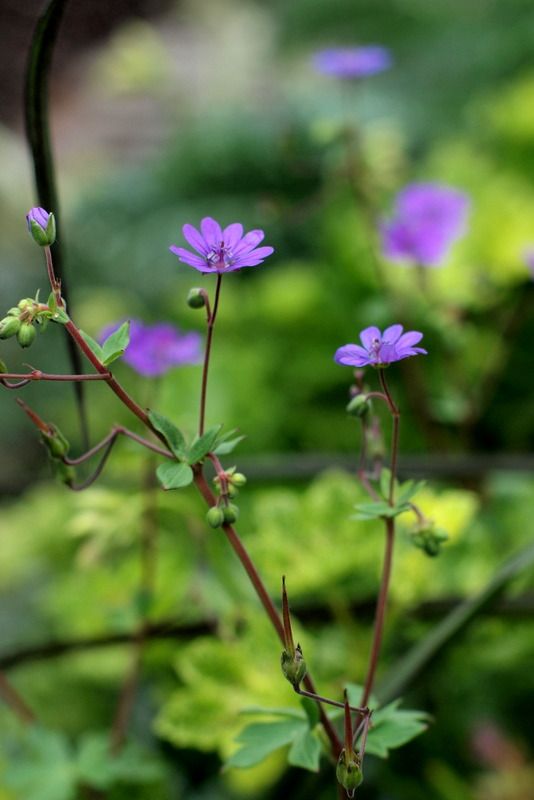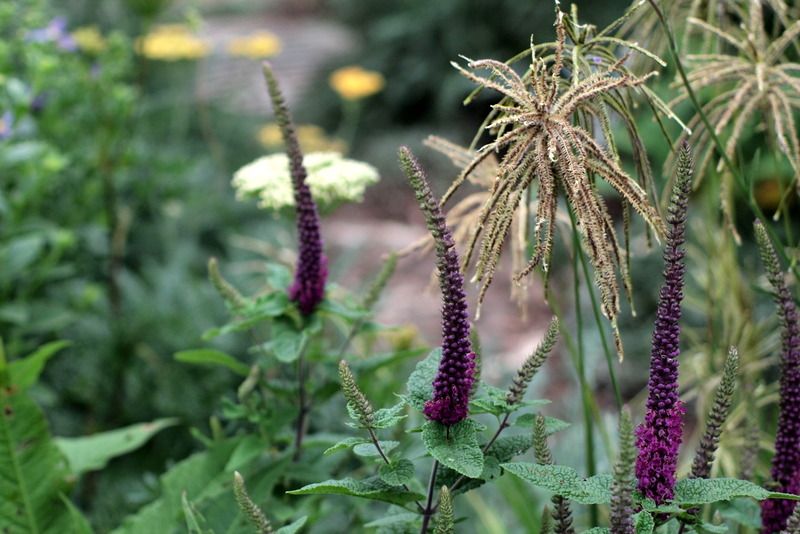
Some of the cast of characters this summer. First spikes of Teucrium hircanicum. Shaggy grass is newly identified Chloris virgata (thank you, Maggie!)
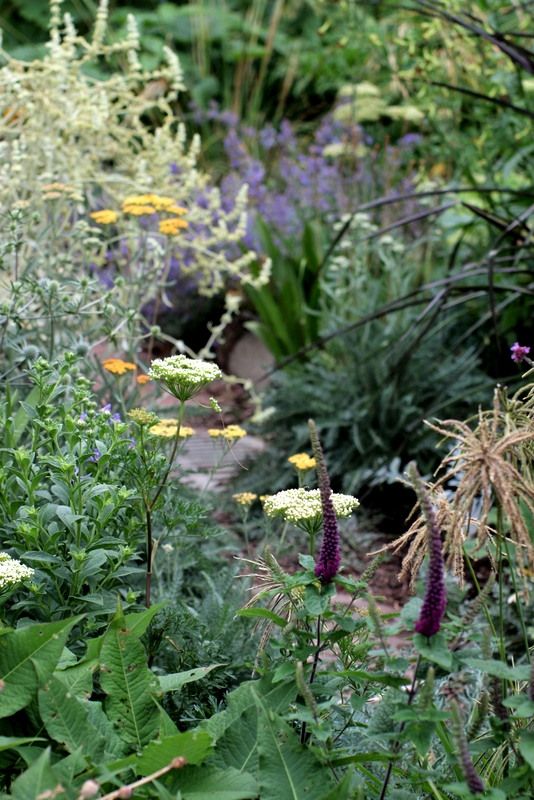
The peachy ‘Terracotta’ yarrow lining the path are beginning bloom too. The white umbels belong to Cenolophium denudatum. I’ve already noticed a self-sown seedling. Sown just last fall with seeds from Derry Watkins.

Self-sown Verbena bonariensis is already up on its hind legs.
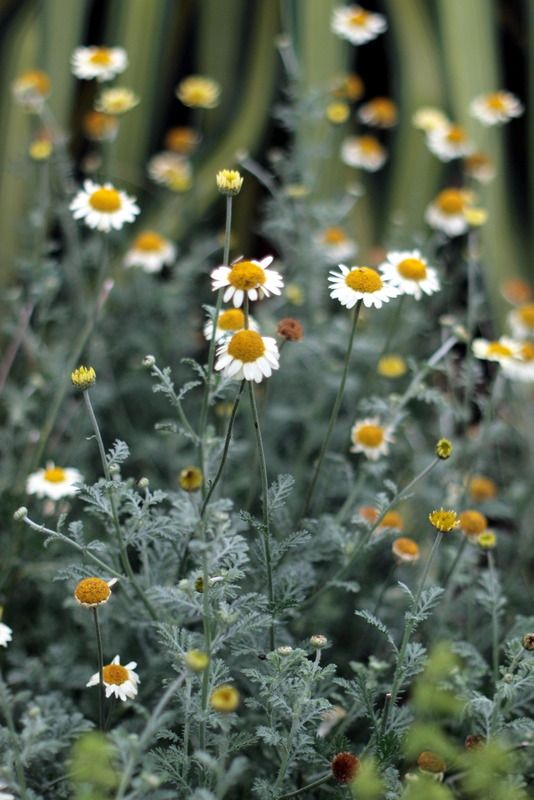
I love me some summer daisies, and buttery yellow Anthemis ‘Susanna Mitchell’ just nails it for me as the quintessential daisy of summer.

More daisies. The first blooms of the ‘Monch’ aster, a daisy often making desert-island lists, 10-best-perennials lists. A remarkably tough plant, even in perennial-averse zone 10.
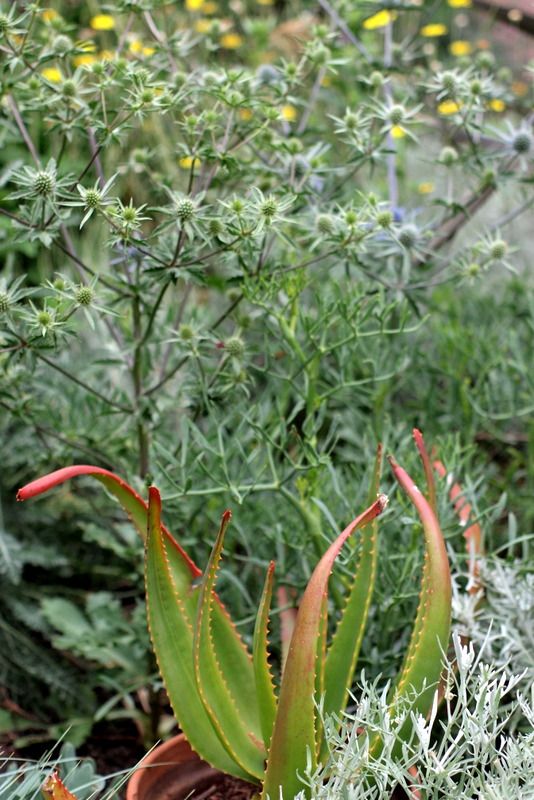
I never thought I’d see clouds of thistly eryngiums in bloom in my garden. Give them space and sun on their basal leaves, and the clouds will come.
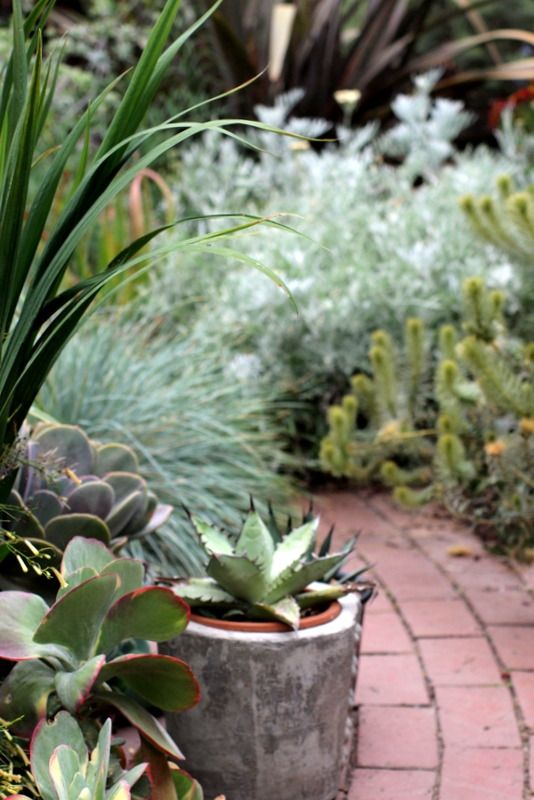
I’m a chronic shuffler. Pots gets shuffled and reshuffled constantly. Succulents like the ‘Fantastic’ flapjack plant, Kalanchoe luciae, get to summer in the ground once the leaves have toughened up and are of no more interest to snails.

Cussonia gamtoosensis stretching towards the sun. I’ll probably plant this in the ground in fall. Which doesn’t technically break my no-more-trees rule since it’s slim silhouette should tuck in just fine, even at 10-plus feet high.
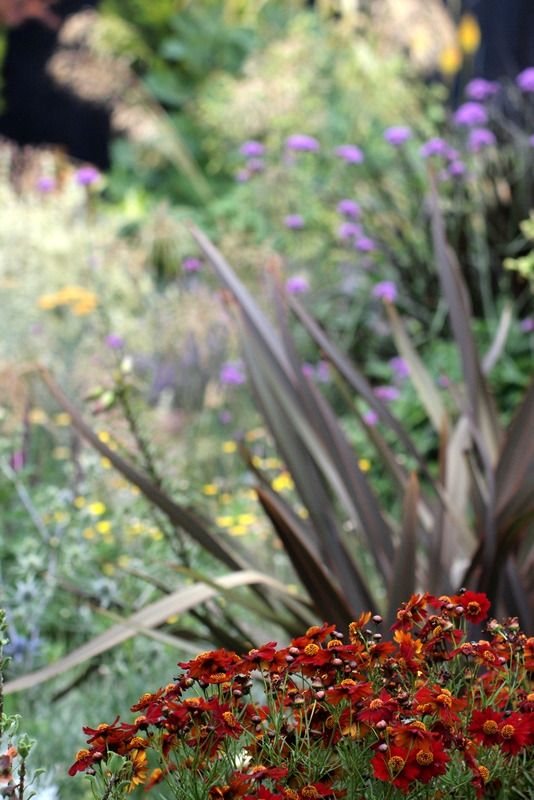
More daisies, burgundy ones from the annual Coreopsis tinctoria ‘Mahogany’
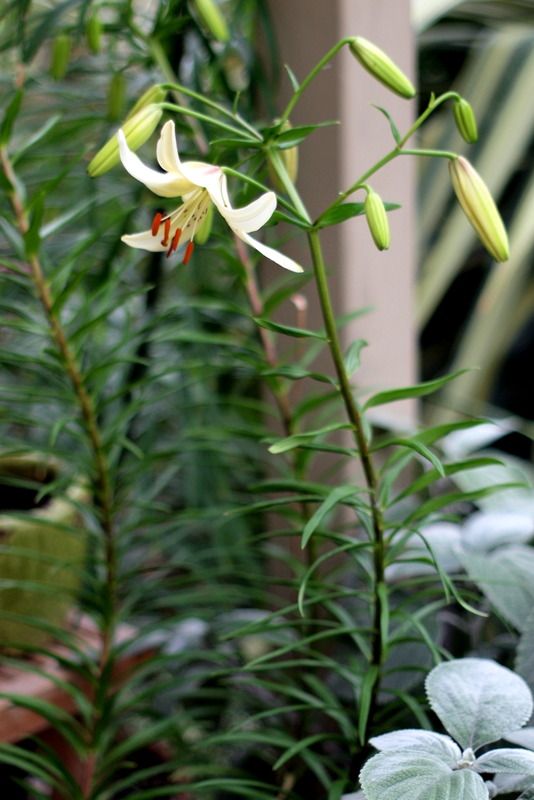
Why don’t I grow more lilies? I have a paltry two pots of lilies this summer. They have no pests here, no scourge of lily beetles.
Growing them in pots keeps them safe from slugs — and from me, since I’m constantly reworking the garden and spearing unsuspecting bulbs. Pots also make it easy to move them from sun to shade when needed and then whisk them out of sight when they’re done blooming.
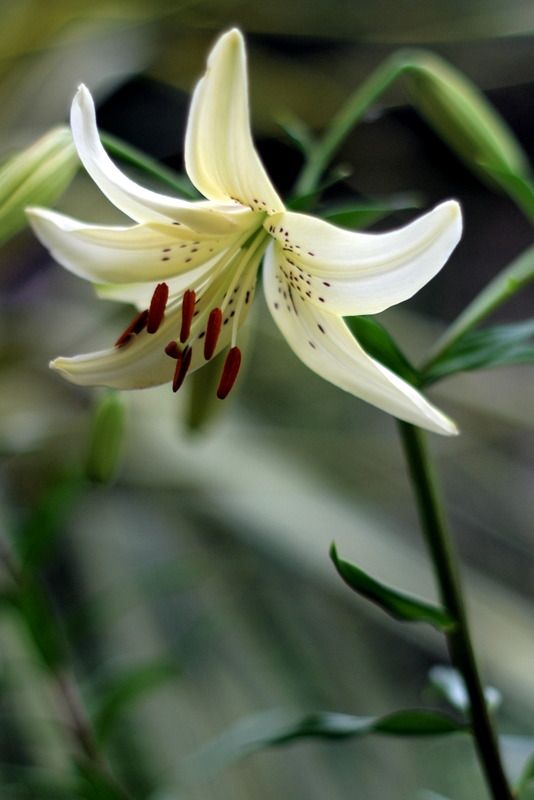
So I repeat, Why don’t I grow more lilies?
Speaking of scourges, the penstemon is succumbing to that omnipresent budworm, possibly the tobacco worm, that always afflicts and distorts the flowers. (If it even is the tobacco budworm — it has no interest in my nicotiana, aka flowering tobaccos.) I was hoping that by not growing penstemon for a few years this nasty piece of work would have moved on. No such luck. And they’re too tiny to find and hand pick or, my favorite method, bisect with scissors. I’m considering BT, Bacillus thuringiensis, a very pest-specific biological pesticide that interrupts the digestive process of tobacco budworms and kills them, and only on the plant where it’s applied. It’s even approved for organic food crops. But as a devout sci-fi fan, I can’t shake the plot twists involving the laws of unintended consequences. Penstemon are otherwise such great plants here, long blooming, drought tolerant. BT has supposedly been cleared as a suspect in Colony Collapse Disorder, that harrowing threat to bees and life as we know it. Since I rarely keep up regimens of any sort, more than likely it’s goodbye penstemon.
Which brings me round again to the question: Why don’t I grow more lilies?

